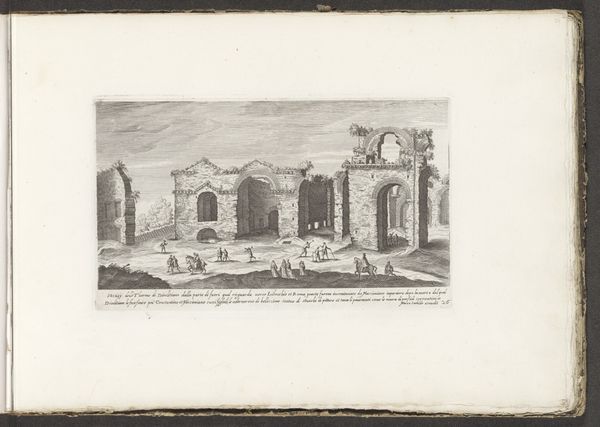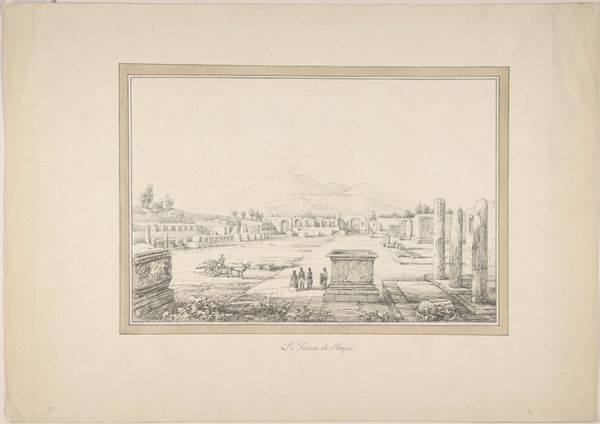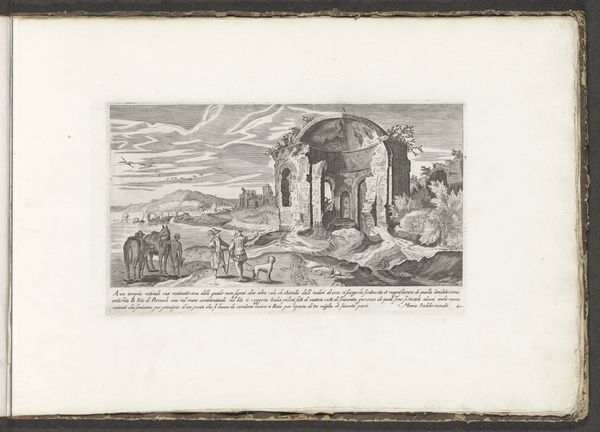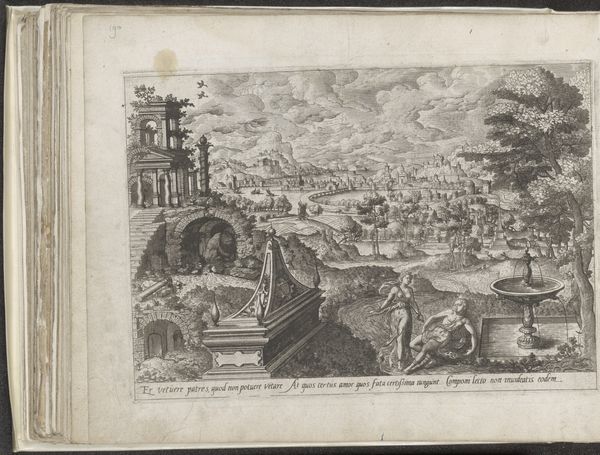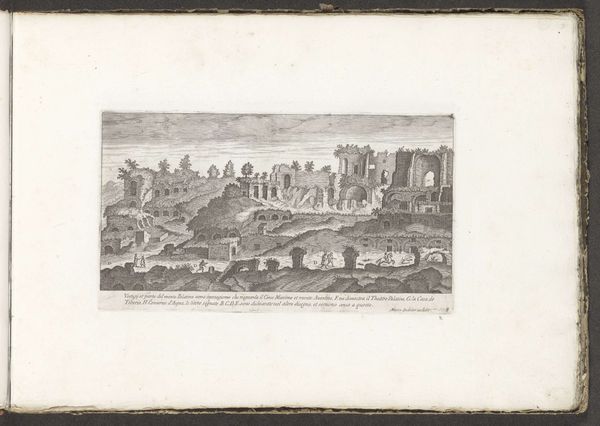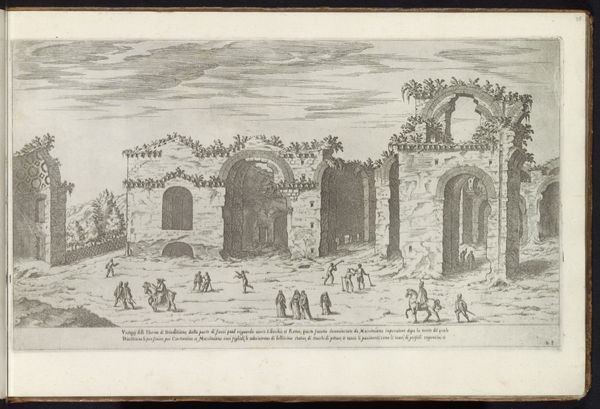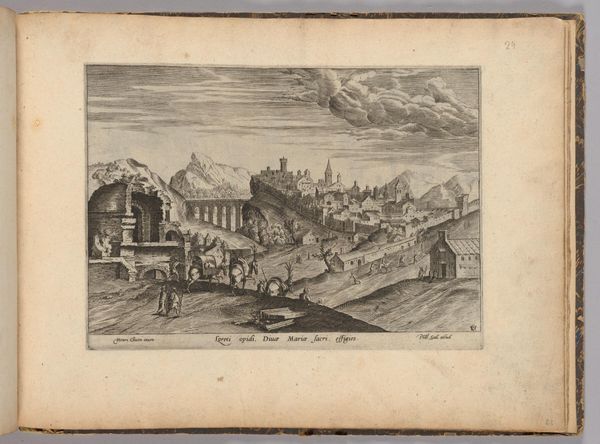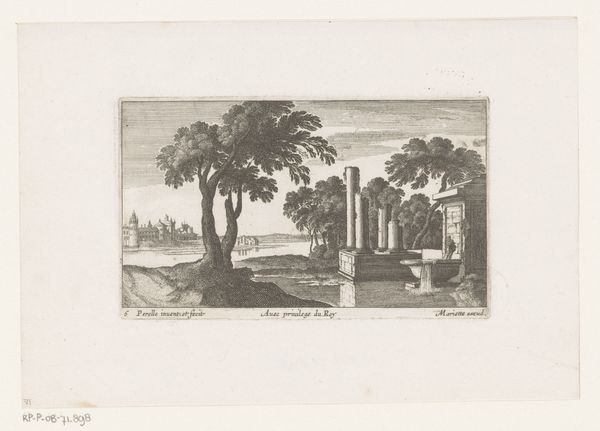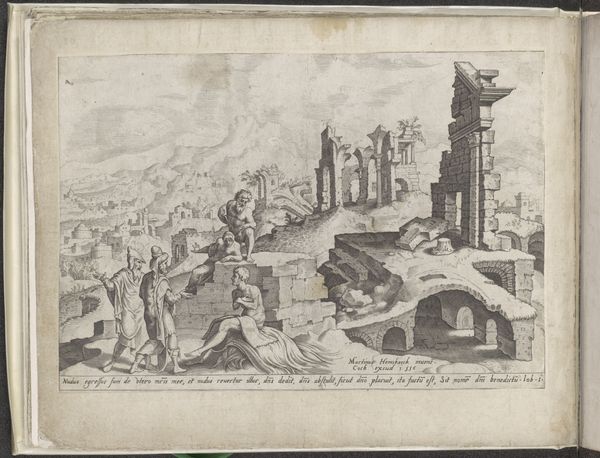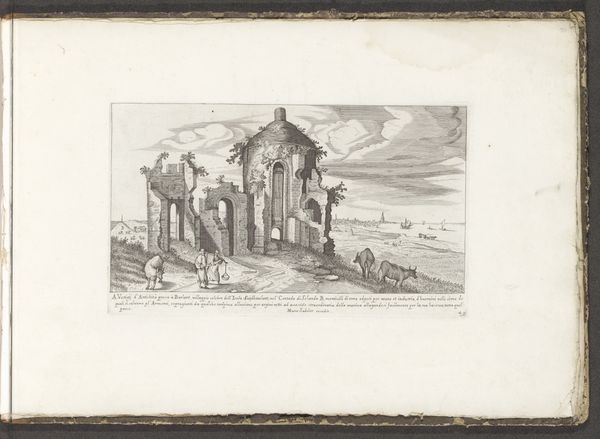
drawing, print, paper, ink, engraving
#
drawing
#
narrative-art
# print
#
landscape
#
classical-realism
#
perspective
#
paper
#
ink
#
cityscape
#
history-painting
#
engraving
Dimensions: height 210 mm, width 336 mm
Copyright: Rijks Museum: Open Domain
Curator: Oh, look at this print! It’s Erik Reitz's "View of the Ruins of the Convent in Gudhem," dating back to 1694. It's rendered in ink on paper, an engraving, actually. Editor: It’s so evocative. The ruins immediately give me this feeling of… melancholy grandeur, you know? A story etched in stone and time. The light seems to hold its breath between the decay. Curator: Absolutely. Reitz really captures that sense of faded glory. What strikes me is the juxtaposition of the crumbling convent with what appears to be an active church nearby. A sort of then-and-now right before your eyes. It reminds you that nothing is immutable. Editor: Right, that spatial tension is doing a lot of work, I think. It forces you to think about religious power, what happened there, and what the image represents, in terms of legacy, erasure, gender, politics…and about its shifting relationship to temporal power. Curator: Tell me more… Editor: Well, convents offered women agency and a degree of autonomy within religious frameworks, and of course that got upended by things like the Reformation. To see it in ruins makes you wonder about women's place in that evolving social and spiritual landscape. It makes me consider who gets written out of history—both figuratively and, sometimes, quite literally in terms of memorializing figures. Curator: Ah, I get you, given the figures—literally, the reclining bodies and winged babies—depicted in this print. There's a theatrical element, almost a staged quality. Reitz, I think, had an eye for this—he used perspective to lead your eye through time, literally and metaphorically. Editor: Exactly. That meticulous perspective, though historically grounded, isn't neutral. It highlights loss and what survives that loss. How ruins become monuments to changing sociopolitical norms. Curator: It's interesting how art can whisper histories like this, histories sometimes overwritten or suppressed. Editor: I know. And perhaps even rewrite our perspectives, and reshape our visions of a more thoughtful and equitable future.
Comments
No comments
Be the first to comment and join the conversation on the ultimate creative platform.
